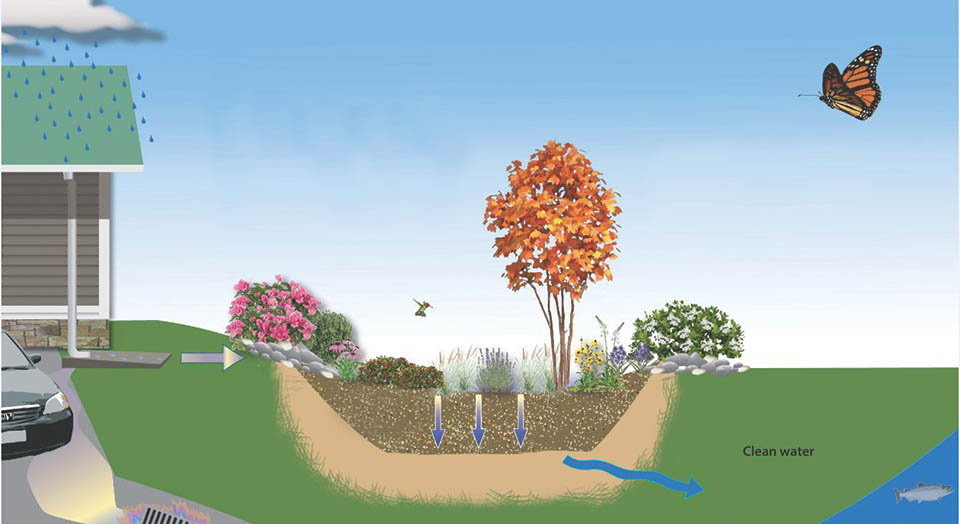Saving Wildlife on a Rainy Day
When the Puyallup School District in Washington state wanted to find a way to protect wildlife, control flooding and stop the flow of pollutant-packed stormwater, it tasked students with designing and planting a rain garden—a shallow bowl-shaped landscape full of native plants that collects and filters stormwater runoff.
“These kids are the next decision-makers for urban environmental design,” says Melissa Buckingham, water quality improvement director for the Pierce Conservation District and one of the adult advisors to this student-run initiative. “They get invested in this project and in seeing it succeed.”
For millennia, forests and soil worked to naturally control flooding and filter water. But with roads, roofs and other hard surfaces dominating urban landscapes, rainwater gushes along, picking up oil, pesticides, fertilizer and other pollutants on the way. When the rainwater reunites with larger bodies of water, it brings these pollutants with it——and to the wildlife that depend on unpolluted water to survive.
Adding a rain garden helps wildlife because it mimics water filtration and the gradual release of a natural forest ecosystem. It also provides habitat for birds and other animals, reduces flooding in homes and streets, prevents erosion and increases property values.
And they are easy to build. “As soon as I learned what a rain garden was, and the simple way that it addressed the largest source of pollution by resurrecting the natural water cycle, I was hooked,” says Aaron Clark, who added a rain garden to his Seattle home in 2015. “It’s a simple and elegant solution that solves the problem of runoff right where it starts.”
Defenders of Wildlife launched Orcas Love Raingardens last year to address stormwater runoff in Puget Sound—part of the Salish Sea. Runoff is the biggest source of toxics harming the severely imperiled southern resident orcas. The program highlights opportunities for schools, parks and neighborhoods in Tacoma to install more rain gardens and encourages residents to learn about their role in protecting orcas and restoring salmon—the orcas’ main food source.

This cross section of a rain garden illustrates how it filters rainwater.
Meanwhile, the Puyallup School District’s raingarden now serves as an interactive classroom. Students use math and science to calculate water filtration rates, examine the ecosystem that’s formed in the raingarden and analyze the pollutants filtered out by the raingarden. Both Buckingham and Clark say that raingardens are an easy way to tangibly improve your local environment and help wildlife.
“My neighbors stop and ask me about my raingarden regularly,” says Clark. “It’s helping my community grow its awareness around runoff pollution, which is too often ‘out of sight and out of mind.’ But this isn’t just another negative environmental worry, because at the same time they learn about the problem, they see a lovely solution that they can do themselves.”
—Leigh Anne Tiffany
Building your own rain garden
-
First check with your local municipality to see if they have guidelines for your area, such as best location and native plants. Some city programs might even cover most of the building costs.
-
Next, map out the garden, organizing plants in locations for best filtration. Test how the water absorbs into the soil, and watch the water runoff path to make sure everything flows where it should.
-
Then it’s just down to digging, adding rock slopes for incoming and outgoing water and planting.
-
If you don’t have a yard or your home doesn’t receive a lot of stormwater runoff, you can propose building a rain garden at your school, library, park or other public green space. There are even specialized rain gardens designed for highway medians.
Only select articles from Defenders are available online. To receive 4 issues annually of the full award-winning magazine, become a member of Defenders of Wildlife!



